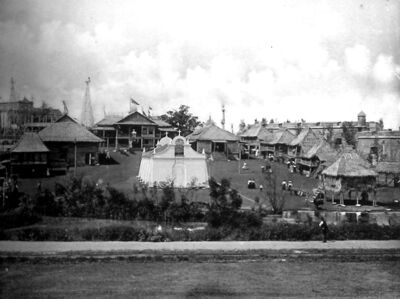Visayan Village: Difference between revisions
Public wiki for the 1904 Louisiana Purchase Exposition
No edit summary |
No edit summary |
||
| (One intermediate revision by the same user not shown) | |||
| Line 9: | Line 9: | ||
| location = [[Philippine Exhibit]] | | location = [[Philippine Exhibit]] | ||
| no_buildings = | | no_buildings = | ||
| construction_cost= | | construction_cost= $20,740 (${{Format price|{{Inflation|US|20740.61|1904}}}} in {{Inflation/year|US}}) | ||
| furnishing_cost = | | furnishing_cost = | ||
| profit = | | profit = $55,909 (${{Format price|{{Inflation|US|55,909.34|1904}}}} in {{Inflation/year|US}}) | ||
| owner = | | owner = M. R. Healy | ||
| architect = | | architect = | ||
| dimensions = | | dimensions = | ||
Latest revision as of 02:06, 7 March 2024
 | |
| Location | Philippine Exhibit |
|---|---|
| Owner | M. R. Healy |
| Construction | |
| Construction Cost | $20,740 ($625,521 in 2021) |
| Proft | $55,909 ($1.69 million in 2021) |
The Visayan Village was located on the shore of Lake Arrowhead in the Philippine Exhibit, just behind the Palace of Agriculture.
Etymology[edit | edit source]
Before the Fair[edit | edit source]
Description[edit | edit source]
The complex of 20 houses was enclosed by a picturesque fence of laced bamboo. The Visayans lived just as like they were in their homes in the islands. They were friendly, highly intelligent and operated a market which contained many beautiful articles and fabrics, including: Jusi, Pina and Sinimay cloth, the making of embroidery, hats, mats, canes, etc. Pineapple fibers that were weaved into silk-like cloths dazzled the visitors. Wood-carving were also showcased. The village was 4 acres in size.
